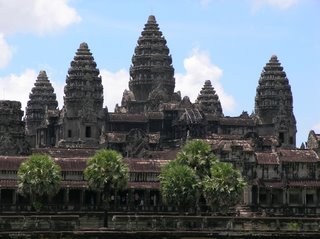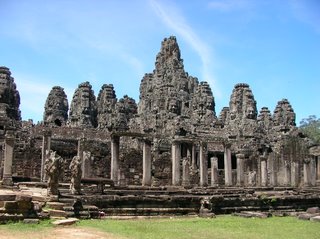Siem Reap - Defeat of Siam

Nestled between rice paddies and stretched along the Siem Reap river, the small provincial capital of Siem Reap town serves as the gateway to the millennium-old temple ruins of the Angkorian-era Khmer Empire. Designated a World Heritage Site by UNESCO, the Angkor Archaeological Park encompasses dozens of temple ruins including Bayon, Banteay Srey and the legendary Angkor Wat whose artistic and archaeological siginificance and visual impact put it in a class with the Pyramids and the Taj Mahal. And though the major temples in the Angkor Archaeological Park are very well touristed these days, it is still possible to get away from the crowds, to explore the area and discover the ancient temples of Angkor.

Siem Reap town is where you will stay during your visit to Angkor. The main body of the town stretches about 2km north/south along the Siem Reap river and roughly 3km to 4km east/west along Route #6. The area has been receiving foreign visitors to the temples for over 100 years. The town is actually a cluster of old villages, which originally developed around individual pagodas, and was later overlaid with a French colonial-era center. Take note of the colonial and Chinese style architecture in the Old French Quarter and around the Old Market.

Often missed are the many opportunities to experience traditional Cambodia: "Apsara" dance performances, craft shops and silk farms, road tours through rice-paddy countryside, boat trips on the Great Tonle Sap Lake to fishing villages and bird santuary. These are the places you have to go besides visiting the temples.

2 comments:
angkor wat....tonle sap...
man feels like Sejarah class all over again...hehe
looks fun! :)
Yes, Sejarah is theory but visiting Siem Reap and Angkor Wat gives you real life experience. It just blow ur mind off how on earth can such structure be built during the 9th, 10th and 11th centuries. Unbelievable!!
Post a Comment